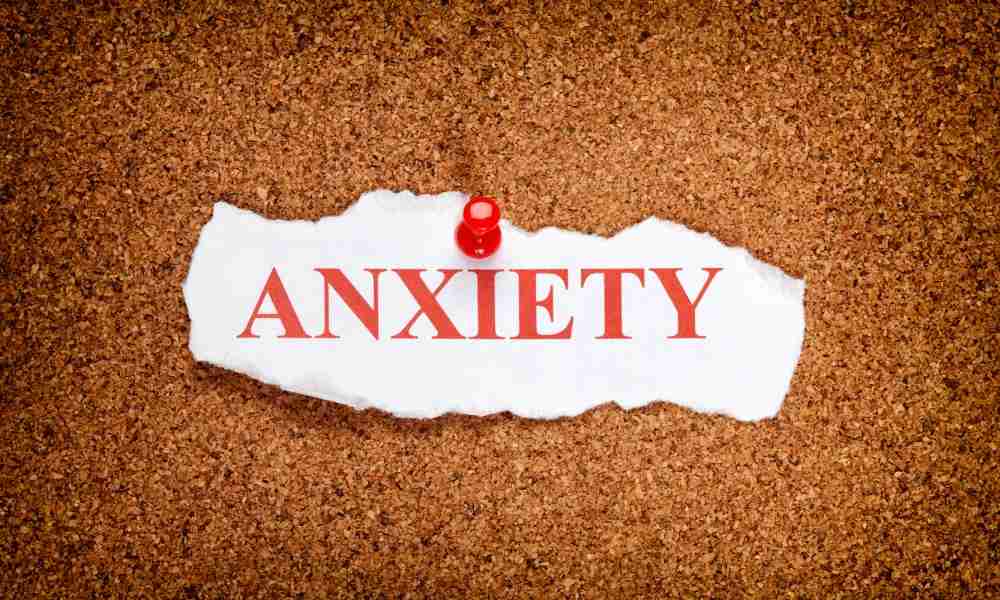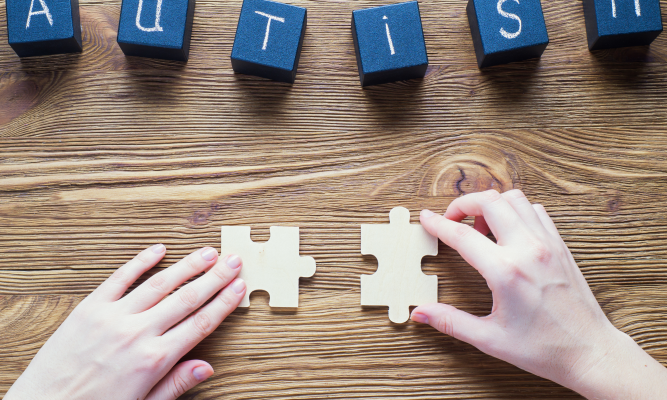
Autism spectrum disorder (ASD) is a developmental disability that can cause
significant social, communication and behavioral challenges. Diagnosing ASD
can be difficult since there is no medical test, like a blood test, to diagnose the
disorder.
Professionals look at the child’s behaviour and development to make a
diagnosis.
ASD can sometimes be detected as early as 6-18 months of age.
There is currently no cure for ASD. However, research shows that early
intervention treatment services can improve a child’s development in
functionally reversing the condition and help in learning important skills.
SIGNS AND SYMPTOMS
- No / Limited social smile by 6 months
- No / Limited one-word communications by 16 months
- No / Limited two-word phrases by 24 months
- No / Limited babbling, pointing, or meaningful gestures by 12 months
- Poor / no eye contact
- Not showing items or sharing interest
- Unusual attachment to one particular toy or object
- Not responding to sounds, voices or name
- Loss of skills at any time
Problems Commonly Associated With Autism
- Poor motor coordination
- Anxiety and low mood
- Sensory issues
- Attention difficulties
- Learning difficulties
- Tics
- Seizures

Depression is a mental health disorder characterized by persistently
depressive mood or loss of interest in activities causing significant impairment
in daily life. Depression is a common but serious mood disorder which leads to
further complications if untreated.
Depression is the most common mental disorder with an estimated 350 million people being affected worldwide.
- 11%percent of adolescents globally are affected by some form of depression.
- 70% more women experience depression as compared to men.
- 14% Women experience postpartum depression.
- 30% of students feel depression and it disrupts their performance.
- DEPRESSION is completely treatable with timely intervention and proper care.
SIGNS AND SYMPTOMS
- Feelings of helplessness and hopelessness
- Loss of interest in daily activities
- Appetite or weight change
- Sleep changes
- Anger or irritability
- Loss of energy
- Self loathing (strong feelings of worthlessness or guilt)
- Reckless behavior
- Concentration problems
- Unexplained aches and pains
- Suicidal thoughts
Depression is the most common mental disorder with an estimated 350 million people being affected worldwide.

Anxiety disorders are a group of mental illnesses, which causes distress that
obstructs you to carry on with your life normally.
For people who have one, worry and fear are constant and overwhelming, and
can be disabling. But with treatment (cognitive behavior therapy and / or
medication), many people can manage those feelings and get back to fulfilling
life.
SIGNS AND SYMPTOMS
- Trouble concentrating on any task
- Irritability : Easily gets irked or irritated
- Restlessness: Pacing around and general listlessness
- Feeling of apprehension as to something may go wrong
- Sweating: Sweaty palms and feet even in comfortable weather
- Palpitations: Feeling as if one is going to get a heart-attack
- Muscle twitches
- Shortness of breath
- Physical pain like headaches, Body pains
- Extreme Fatigue: Inexplicable tiredness even after resting
- Sleeplessness: Being unable to sleep or finding oneself awake at odd hours
- Increased Urination or diarrhoea: A stomach upset for no reason
- Choking: A feeling of someone throttling

OCD is a disabling illness, a type of Anxiety Disorder that causes the person
suffering from it to perform repetitive actions or behaviour. They are plagued
by recurring thoughts, fears or images they cannot control. The anxiety
produced by these images or thoughts leads to an immediate need to perform
certain routines or ‘compulsions’.
This ritual may temporarily provide relief to the person but they must perform
the same actions once again when the obsessive thoughts return. This cycle
will take up the most of a person’s day and significantly interferes with their
day to day activities. People with OCD may be aware that their obsession and
compulsions are not normal but they cannot stop themselves from indulging in
them.
SIGNS AND SYMPTOMS
Common obsessions:
- Repeated unwanted ideas
- Fear of contamination by germs or dirt
- Aggressive behaviour/ fear of causing harm to others
- They feel a need for order or for exactness or symmetry in all things
- Persistent thoughts of behaving in an embarrassing manner
Common compulsions:
- Repeatedly performing an action. e.g.: washing hands, cleaning doorknobs
- Refusing to shake hands or touch any items
- Constantly arranging things in a certain way and getting anxious if they’re unable to do so.
- Being stuck with some thoughts and unable to change or push them away and this usually leads to sleeplessness and restlessness.
- They feel a need to perform some kind of activity many number of times.
- They usually hoard some kinds of items with no specific value.
SIGNS AND SYMPTOMS AS SEEN IN CHILDREN
In kids the signs may also include
- Lucky or unlucky numbers
- A preoccupation with bodily wastes
- They feel frustrated or guilty for not being able to control their behaviour.
- Intrusive sounds and words.
And these lead to certain compulsions such as
- Specific grooming rituals that they follow religiously, e.g.: brushing teeth, bathing etc.
- Repeating rituals such as walking in and out of a doorway in a special manner, preferring to walk in a particular manner only, writing and erasing to write again, etc.
- Touching rituals
- Counting rituals
- Cleaning rituals

Panic Disorder is also another kind of anxiety attack. Panic Attacks are always
sudden and happen out-of-the-. It usually occurs when there are major life
changes happening, though the reasons behind it are largely unclear. You
could say that it is a far more intense feeling than feeling ‘stressed-out’. The
level of fear is completely out of proportion to the actual situation and is more
than often unrelated. The person having a panic attack may feel as though
they’re having a heart-attack or might even be dying.
Panic Attacks may seem like death. They can be very severe and debilitate a
person.
SIGNS AND SYMPTOMS
- Difficulty in breathing or shortness of breath cannot get enough air. They feel like they have run a marathon.
- They feel intense paralyzing fear.
- They feel like they are choking or like someone is throttling/smothering them along with chest pains.
- They experience nausea and stomach-ache.
- They sweat profusely.
- Experience a tingling sensation.
- May experience hot flashes or sudden chills.
- Almost always have a racing heartbeat.
- Feeling of being in an unreal world or feeling detached.
- They may fear of dying, losing control or going crazy.
- Hot or cold flashes.
- Heart palpitations.

Schizophrenia is defined as “a chronic mental disorder in which a person loses
touch with reality. This usually shows in the same person in different manners
at different times. The person suffers from delusions that are usually
accompanied by hallucinations, particularly things like hearing voices, and
perceptual disturbances. These symptoms or paranoid delusions make a
person unreasonably suspicious of people around them and also have a huge
effect on leading a normal day to day life.
Schizophrenia affects about 1% of the population. Schizophrenia doesn’t
mean split personality or multiple personality. Most of the people with this
condition are not dangerous or violent. With effective treatment, they can live
a happy and normal life.
SIGNS AND SYMPTOMS
- Social withdrawal
- Hostility or suspiciousness, extreme reaction to criticism
- Deterioration of personal hygiene
- Flat, expressionless gaze
- Inability to cry or express joy or inappropriate laughter or crying
- Over sleeping or insomnia
- Forgetful, unable to concentrate
- Delusions
- Hallucinations
- Disorganized speech
- Disorganized behavior

Attention Deficit Hyperactivity Disorder or ADHD is a common childhood illness
that can be treated. It is a health condition involving biologically active
substances in the brain. Studies show that ADHD may affect certain areas of
the brain that allow us to solve problems, plan ahead, understand others’
actions, and control our impulses.
ATTENTION DEFICIT HYPERACTIVITY DISORDER
Symptoms of inattention in children:
- Doesn’t pay attention to details
- Makes careless mistakes
- Has trouble staying focused; is easily distracted
- Appears not to listen when spoken to
- Has difficulty remembering things and following instructions
- Has trouble staying organized, planning ahead, and finishing projects
- Gets bored with a task before it’s completed
- Frequently loses or misplaces homework, books, toys, or other items
Symptoms of hyperactivity in children:
- Constantly fidgets and squirms
- Often leaves his or her seat in situations where sitting quietly is expected
- Moves around constantly, often runs or climbs inappropriately
- Talks excessively
- Has difficulty playing quietly or relaxing
- Is always “on the go,” as if driven by a motor
- May have a quick temper or a “short fuse”
Symptoms of impulsivity in children:
- Acts without thinking
- Blurts out answers in class without waiting to be called on or hear the whole question
- Can’t wait for his or her turn in line or in games
- Says the wrong thing at the wrong time
- Often interrupts others
- Intrudes on other people’s conversations or games
- Inability to keep powerful emotions in check, resulting in angry outbursts or temper tantrums
- Guesses, rather than taking time to solve a problem

ODD is a condition in which a child or displays an ongoing pattern of an angry or
irritable mood, defiant or argumentative behavior, and vindictiveness toward
people in authority.
OPPOSITIONAL DEFIANT DISORDER
Signs and Symptoms:
- Throwing repeated temper tantrums
- Excessively arguing with adults especially those with authority
- Actively refusing to comply with request and rules
- Deliberately trying to annoy or upset others or being easily annoyed by others
- Blaming others for their mistakes
- Having frequent out bursts of anger and resentment
- Being spiteful and seeking revenge
- Swearing or using obscene language
- Saying mean and hateful things when upset

Conduct disorder is a serious behavioral and emotional disorder that can occur in
children and teens. A child with this disorder may display a pattern of disruptive
and violent behavior and have problems following rules.
It is not uncommon for children and teens to have behavior-related problems at
some time during their development. However, the behavior is considered to be
a conduct disorder when it is long-lasting and when it violates the rights of others,
goes against accepted norms of behavior and disrupts the child's or family's
everyday life.
SIGNS AND SYMPTOMS
Aggressive Conduct:
- Intimidating or bullying others
- Being cruel to others or animals
- Threatening or Physically harming people or animals on purpose
- Committing rape / forcing others into sexual activity
- Using a weapon
Deceitful Behavior:
- Lying
- Breaking and entering
- Stealing
- Forgery
Destructive Behavior:
- Destructive conduct may include arson and other intentional destruction of property.
Violation of Rules:
- Skipping school
- Running away from home
- Drug and alcohol use
- Sexual behavior at a very young age

Learning disabilities are neurologically based processing problems, which
interfere with learning basic skills, such as reading, writing, and math. They
also interfere with organization, planning, reasoning, memory and attention.
Type of Learning Disabilities:
Auditory Processing Disorder
Individuals with Auditory Processing Disorder do not recognize subtle differences between sounds in words, even when the sounds are loud and clear enough to be heard. They can also find it difficult to tell where sounds are coming from, to make sense of the order of sounds, or to block out competing background noises.
Dyscalculia
Specific learning disability that affects a person’s ability to understand numbers and learn math facts. Individuals with this type of LD may also have poor comprehension of math symbols, may struggle with memorizing and organizing numbers, have difficulty telling time, or have trouble with counting.
Dysgraphia
Specific learning disability that affects a person’s handwriting ability and fine motor skills. Problems may include illegible handwriting, inconsistent spacing, poor spatial planning on paper, poor spelling, and difficulty composing writing as well as thinking and writing at the same time.
Dyslexia
Specific learning disability that affects reading and related language-based processing skills. The severity can differ in each individual but can affect reading fluency, decoding, reading comprehension, recall, writing, spelling, and sometimes speech and can exist along with other related disorders. Dyslexia is sometimes referred to as a Language-Based Learning Disability.
Language Processing Disorder
Specific type of Auditory Processing Disorder (APD) in which there is difficulty attaching meaning to sound groups that form words, sentences and stories. While an APD affects the interpretation of all sounds coming into the brain, a Language Processing Disorder (LPD) relates only to the processing of language. LPD can affect expressive language and/or receptive language.
Non-Verbal Learning Disabilities
Disorder which is usually characterized by a significant discrepancy between higher verbal skills and weaker motor, visual-spatial and social skills. Typically, an individual with NLD (or NVLD) has trouble interpreting nonverbal cues like facial expressions or body language, and may have poor coordination.
Visual Perceptual Disorder
Disorder that affects the understanding of information that a person sees, or the ability to draw or copy. A characteristic seen in people with learning disabilities such as Dysgraphia or Non-verbal LD, it can result in missing subtle differences in shapes or printed letters, losing place frequently, struggles with cutting, holding pencil too tightly, or poor eye/hand coordination.

Couple counselling or marriage therapy is a form of therapy that looks to
improve communication and resolve issues within an intimate relationship.
Common issues that are addressed:
- Lack of trust
- Betrayal or affair
- Jealousy
- Lack of communication
- Financial issues
- Work related stress
- Different sexual needs or other sexual issues
- Family conflicts
- Different goals and values
- Different parenting styles
- Life changes
The list is not exhaustive. Every situation is unique.

Pre-marital counselling is a type of therapy that helps couples prepare for
marriage. It can help ensure that you and your partner have a strong, healthy
relationship – giving you a better chance for a stable and satisfying marriage.
Pre-marital counselling is a type of therapy that helps couples prepare for marriage. It can help ensure that you and your partner have a strong, healthy relationship – giving you a better chance for a stable and satisfying marriage.
How it is done?
Couples are encouraged to discuss topics related to marriage such as –
- Finances
- Communication
- Beliefs and values
- Roles in marriage
- Affection and sex
- Children and parenting
- Family relationships
- Decision making
- Dealing with anger
- Time spent together
It helps in setting realistic expectations for marriage and develop conflict-resolution skills.

Paranoid personality disorder is a type of eccentric personality disorder in
which an individual’s behavior may seem odd or unusual to others.
SIGNS AND SYMPTOMS
- Suspects without sufficient basis
- May behave in a hostile or stubborn manner
- May be sarcastic
- Believes that others have hidden motives to harm them
- Doubts the loyalty of others
- Hyper sensitivity to criticism
- Having trouble working with others
- Being quick to become angry and hostile
- Becomes detached or socially isolated
- Becomes argumentative and defensive
- Having trouble seeing their own problems
- Having trouble relaxing
During a child’s developmental years they are constantly growing and changing. It is important to keep in mind when diagnosing and treating emotional and behavioral disorders in children, that all behavioral issues are not long lived. Some can be temporary and short lived.

During a child’s developmental years they are constantly growing and
changing. It is important to keep in mind when diagnosing and treating
emotional and behavioral disorders in children, that all behavioral issues are
not long lived. Some can be temporary and short lived.
- Temper tantrums
- Physical aggression
- Verbal aggression
- Extreme crying
- Sibling rivalry

Asperger's Syndrome
Do you think there’s something off with your child and you cannot place your finger on it? Does your child resist eye contact? Is your child socially awkward i.e., shy, nervous and uncomfortable in social settings etc? Read on.
Kids and Children with Asperger’s often tend to be just as smart as other kids, only that they have some kind of trouble with social skills. Often, kids with Asperger’s tend to have difficulty reading the body language of others. They also tend to connect more with adults than with their peers.
Asperger’s is characterised by poor social skills, obsessions, few facial patterns, odd speech patterns and other abnormal mannerisms. They may function normally and appear to have normal intelligence. Kids with Asperger’s are considered to be on the Autism Spectrum since 2013 by the DSM V.
Experts say that Asperger’s syndrome follows a continuous course and can last a lifetime. However, symptoms may increase and decrease over time and early intervention certainly helps.
Signs and Symptoms
These are some of the signs and symptoms kids or children with Asperger’s may show:
- The Kids have difficulty making friends with kids of their own age.
- They cannot empathise and may seem insensitive to others feelings.
- They have a hard time ‘reading’ other people and may have difficulty understanding humour.
- They do not engage in small talk.
- They are always in their own world- may seem to be self-absorbed or egocentric.
- They may speak in a monotonous rigid, jerky or unusually fast manner.
- Most of the times they may hold long one-sided conversations without noticing if the listener is listening or without any notion of time and on the same topic.
- They have a good vocabulary but have difficulties understanding the nuances in language.
This starts from around 5 years of age and is more common in boys than in girls. If you notice that your kid has difficulties in holding your gaze, has difficulty understanding your physical stance/behaviour or has trouble showing any kind of emotion; meaning even while talking they adopt a single tone and continue in the same flat tone, and also has difficulty when presented with change in routine, do consult with us for a proper diagnosis. Remember, early intervention helps.
It is of utmost importance that unlike in autism, there is no delayed milestone developments. They may have minimal delay in cognitive development as well.
Causes
As with other disorders, the exact causes for Asperger’s are not clear. There may be many causes including genetics. Some believe that Asperger’s is associated with other disorders such as bipolar disorder or also depression. It is a neurological disorder that has no specific cure. Most of the times kids with Asperger’s tend to become adults with Asperger’s. But it is possible to lead a happy, content and normal life by choosing early intervention, appropriate education and parental support.
Complications :
Most of the kids who display Asperger’s show a dislike toward social activities and may have different moods. They may or may not suffer from depressions as a result of being different from others. There is also an increased risk of developing psychosis at a later stage.
How to help?
- Educating the parents of kids who have Asperger’s really helps.
- Help the kids learn life skills that will help them in going about day-to-day lives with maximum independence.
- Take help and get support.
Remember that there is no stigma in getting or seeking help. Early intervention is the key in discovering and treating Autism Spectrum Disorders.
Pervasive Developmental Delays
Pervasive developmental delays are mainly characterised by multiple symptoms similar to autism but/and/or also displaying symptoms of classic autism and Asperger’s along with other disorders. This can can happen in conjunction with a wide spectrum of intellectual abilities and hence come under the wider Autistic spectrum. In other words, this means delay in the development of many basic skills such as communicating with others, socialising and imagining. These conditions usually start to manifest around the 3yrs of age, which is a critical period in a child’s developmental journey.
A parent may not be able to notice any changes or differences in the child until this age as this is when the child’s development is more obvious or is more prone to scrutiny. This is when the parent may realise that the child isn’t walking, talking or reacting to things in a manner children their age are supposed to.
Signs and Symptoms :
These are some signs that may be seen in kids with Pervasive Developmental Delays. They tend to display a wide range of symptoms that range from mild to disabling as they fall into a wide range of disorders.
- Inappropriate social behaviour and inability to connect with peers or relate to them.
- Difficulty in understanding simple instructions or sentences, they may not be able to form simple sentences.
- Poorly developed speech and language comprehension skills.
- Repetitive or ritualistic behaviours
- Increased or decreased sensitivities to different sense such as taste touch etc.
- Difficulties in adapting to any transitions , change in routines
- Uneven or late skill development.
- Difficulty sleeping
- Fearfulness or feeling anxious
It is currently estimated that about one in every 88 children suffers from Pervasive developmental delays. In general, PDD occurs more in boys than girls.
Causes :
The cause as to why PDD occurs is still under research. There are some metabolic or biochemical disorders that contribute to autism that may cause PDD. Another study suggests that Spinal cord injuries also may cause PDD. Researchers are currently studying people with autism to examine the structure and functioning of the brain to help us understand better these conditions and how to best treat them.
In order to diagnose if the child has PDD, your therapist may suggest some tests and conduct a physical examination. Also, you may be asked to complete a developmental screening questionnaire.
Types :
There are five types of PDD:
- Autistic Disorder
- Rett’s Disorder
- Childhood Disintegrative Disorder
- Asperger’s Disorder
- Pervasive Developmental Disorder Not Otherwise Specified
Treatment
There are many treatment plans and intervention programs to help the child
- Special Education: Structured according to the need of the child. Tailor made to suit the exact need.
- Behaviour Modification: As suggested by the therapist, it will include strategies for supporting positive behaviour of the child.
- Speech therapy and Physical Therapy